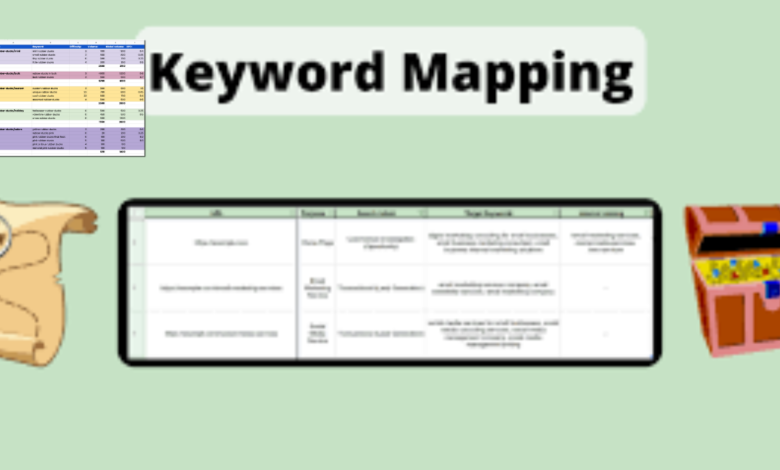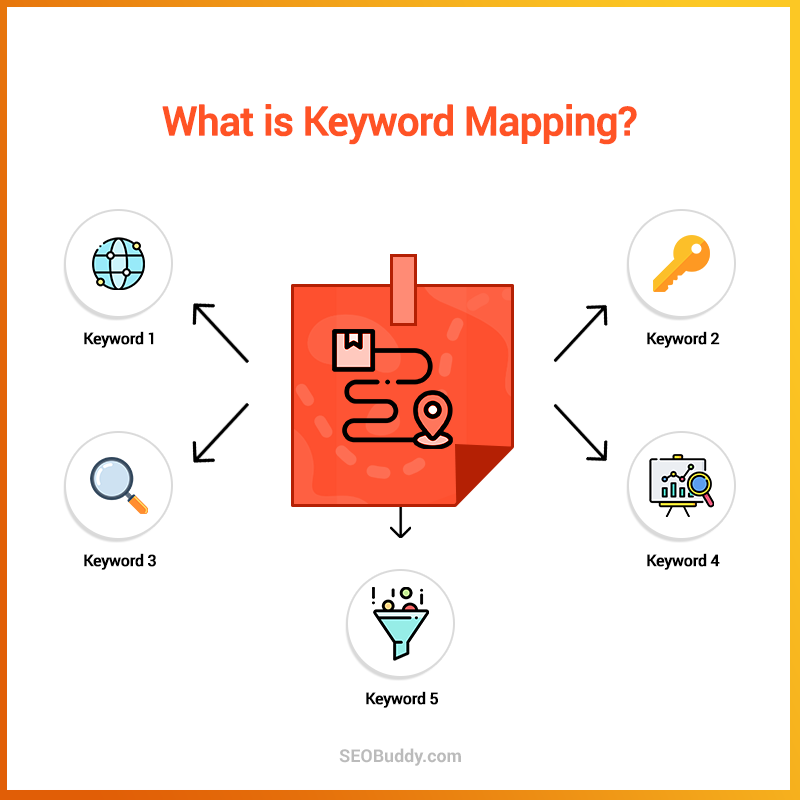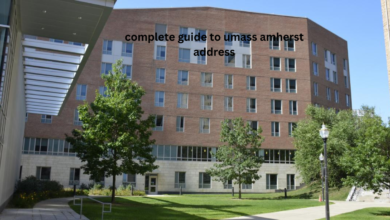Keyword Mapping: A Comprehensive Guide for SEO Success

In the ever-evolving world of search engine optimization (SEO), keyword mapping has become an indispensable tool for businesses looking to improve their online visibility. Understanding how to use keyword mapping effectively can help you target the right audience, enhance your content strategy, and ultimately, improve your website’s rankings on search engines like Google.
Keyword mapping involves organizing and assigning specific keywords to individual pages on your website in a strategic manner. It helps ensure that each page is optimized for the right keywords, avoiding keyword cannibalization and maximizing your chances of ranking high in search engine results pages (SERPs). In this guide, we’ll explore the ins and outs of keyword mapping, why it’s crucial, how to implement it, and its impact on your SEO strategy.
What is Keyword Mapping?
Defining Keyword Mapping

Keyword mapping is the process of assigning target keywords to specific pages on your website. Instead of using the same keywords across multiple pages, keyword mapping ensures that each page is optimized for unique, relevant keywords. By doing this, you can avoid keyword cannibalization, where two or more pages on your site compete for the same search query, thereby reducing your chances of ranking well.
Think of it as creating a roadmap for your content. Each page has a destination (ranking for a keyword), and keyword mapping helps you assign the right keywords to the right pages to guide your audience directly to the information they’re searching for.
Why is Keyword Mapping Important?
Keyword mapping is vital for several reasons. First and foremost, it helps streamline your SEO efforts by giving each page a clear target. When done correctly, keyword mapping ensures that your website covers a wide array of search queries without overlapping, leading to higher rankings and better user experience.
Another important aspect is the strategic organization of content. By mapping keywords to specific pages, you can create a clear site structure and hierarchy, making it easier for search engines to understand the purpose of each page. This organization can boost your website’s authority and relevance in the eyes of search engines, leading to better rankings.
Lastly, keyword mapping helps align your content with the user’s search intent, which is a critical factor in SEO today. Search engines are becoming increasingly sophisticated in determining whether a piece of content matches the user’s intent, so making sure that your content aligns with the right keywords is essential for driving qualified traffic.
Types of Keywords Used in Mapping
Before diving into the process of keyword mapping, it’s essential to understand the types of keywords you’ll be working with:
- Short-Tail Keywords: These are broad search terms, usually one to two words long, such as “shoes” or “digital marketing.” They have high search volumes but are also highly competitive.
- Long-Tail Keywords: These are more specific phrases, typically three or more words, such as “best running shoes for flat feet” or “digital marketing strategies for small businesses.” They have lower search volumes but are more targeted and often easier to rank for.
- LSI Keywords (Latent Semantic Indexing): These are related terms or phrases that give context to your primary keyword. For example, for the keyword “digital marketing,” LSI keywords could include “SEO,” “content marketing,” and “social media marketing.”
Understanding these different types of keywords will help you in creating a more comprehensive keyword mapping strategy.
The Process of Keyword Mapping
Step 1: Conduct Keyword Research
The first step in keyword mapping is conducting thorough keyword research. You need to identify the keywords that are most relevant to your business, industry, and audience. There are several tools you can use to conduct keyword research, including Google Keyword Planner, SEMrush, Ahrefs, and Moz.
When conducting keyword research, you should focus on finding keywords that not only have a high search volume but also align with the search intent of your target audience. It’s also important to balance between short-tail and long-tail keywords. While short-tail keywords can bring in more traffic, long-tail keywords are more likely to convert because they are more specific to the user’s needs.
Here are some factors to consider when selecting keywords:
- Search Volume: How many people are searching for the keyword? A higher search volume means more potential traffic, but it also means more competition.
- Keyword Difficulty: This is a measure of how hard it will be to rank for a specific keyword. High-competition keywords will be more challenging to rank for, especially for newer or smaller websites.
- Relevance: The keyword must be relevant to the content on your page and match the user’s search intent. Don’t choose keywords that don’t fit naturally with your content just for the sake of ranking.
- Search Intent: Is the user looking for information (informational), trying to buy something (transactional), or comparing options (navigational)? Identifying the intent behind a keyword is crucial for successful keyword mapping.
Step 2: Categorize Your Keywords
Once you’ve gathered a list of keywords, the next step is to categorize them. Categorizing your keywords helps you organize them based on their relevance to your website’s various sections or pages.
- Homepage Keywords: Your homepage should target the most important, broad keywords that define your brand or main offerings. For example, if you run an online shoe store, the homepage could target the keyword “buy shoes online.”
- Product/Service Page Keywords: Each of your product or service pages should have specific keywords related to what they offer. For instance, a page dedicated to running shoes might target keywords like “best running shoes for women” or “running shoes for long distances.”
- Blog Post Keywords: Blog posts often target long-tail, informational keywords. For example, a blog post could target “how to choose the right running shoes” or “top digital marketing trends for 2024.”
By categorizing your keywords, you’ll have a clearer understanding of which keywords should be assigned to each page during the mapping process.
Step 3: Create a Keyword Map
Now that you’ve conducted keyword research and categorized your keywords, the next step is to create a keyword map. This involves assigning your selected keywords to specific pages on your website.
You can create a keyword map using a simple spreadsheet where you list the pages of your website in one column and the corresponding target keywords in another. Be sure to include LSI keywords and secondary keywords where relevant.
When assigning keywords to pages, keep in mind the following:
- One Primary Keyword per Page: Each page should have one primary keyword that it is optimized for. This helps avoid keyword cannibalization and keeps your SEO efforts focused.
- Use of LSI Keywords: Incorporate LSI keywords naturally into the content. These related terms will help search engines better understand the context of your content and improve your chances of ranking for a broader range of searches.
- Intent Alignment: Ensure that the keyword matches the content and search intent for that page. If the page is transactional, don’t target informational keywords, and vice versa.
By assigning the right keywords to the right pages, you’re creating a clear structure for your website that both users and search engines can navigate easily.
Step 4: Optimize Content for Mapped Keywords
Once your keywords are mapped, it’s time to optimize your content. Keyword optimization involves using the target keywords in key areas of your webpage to signal to search engines that your content is relevant for those terms.
Here are some key areas where you should include your target keywords:
- Title Tags: Include your primary keyword in the title tag, ideally toward the beginning. The title tag is one of the most important on-page SEO factors, so make sure it accurately reflects the content on the page.
- Meta Descriptions: Your meta description should also include the primary keyword. Although meta descriptions don’t directly impact rankings, they can influence click-through rates, which are an important ranking factor.
- Headings (H1, H2, H3): Use your primary keyword in the H1 tag (main heading) and secondary keywords or LSI keywords in subheadings (H2, H3 tags). This structure helps search engines and users quickly understand what the page is about.
- Body Content: Naturally incorporate your target keywords throughout the body content, but avoid keyword stuffing. A good rule of thumb is to aim for a keyword density of 1-2%, meaning your keyword should appear once or twice per 100 words.
- URL Structure: Include the primary keyword in the URL of the page. This helps with SEO and makes it clear to both search engines and users what the page is about.
- Image Alt Text: Use your target keyword in the alt text for images. This helps with SEO and makes your site more accessible for users with disabilities.
Step 5: Regularly Update and Refine Your Keyword Map
Keyword mapping isn’t a one-and-done task. The digital landscape is constantly evolving, and your keyword map should evolve with it. Regularly revisit your keyword map to ensure that it’s still aligned with your SEO strategy and business goals.
Here are some reasons you might need to update your keyword map:
- New Content: If you add new content to your website, you’ll need to assign relevant keywords to those pages.
- Changes in Search Trends: Search trends can change over time, and once popular keywords might become less relevant. Updating your keyword map ensures you stay ahead of these changes.
- Competitor Changes: If competitors start ranking for certain keywords, you may need to adjust your keyword map to target more competitive terms or find new opportunities.
By regularly updating your keyword map, you can keep your SEO strategy fresh and ensure that your content remains competitive in search engine rankings.
The Benefits of Keyword Mapping
Improved SEO Performance
The most significant benefit of keyword mapping is improved SEO performance. By assigning specific keywords to individual pages, you increase the chances of those pages ranking for relevant search queries. This can lead to higher visibility and more organic traffic.





